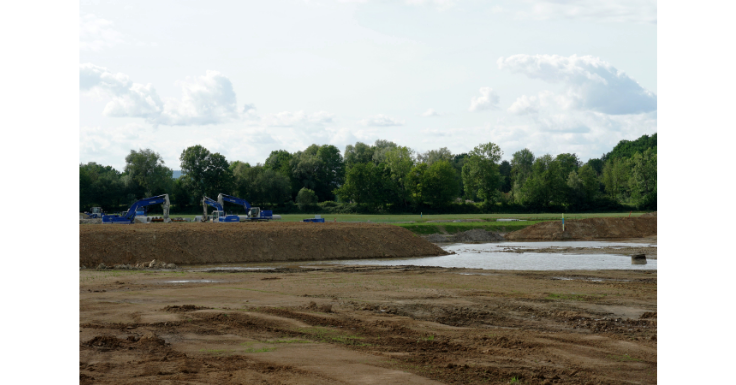
Commercial Builders Beware: Complications Ahead on Non-Tidal Wetlands Permits in Virginia
Oh How We Miss the 2017 Version of Nationwide Permit 29
The old version of Nationwide Permit 29 was replaced on March 15, 2021. Our friends at Wetlands Studies and Solutions, Inc. are subject matter experts in wetlands permitting and other natural and cultural resource issues. WSSI’s recent article warns of a complication that attached itself to the set of 16 Nationwide Permits (NWP’s) that the U.S. Army Corps of Engineers (USACE) finalized on March 15, 2021. We examine the affect this could have on the commercial builder planning to construct a residential subdivision on a parcel with non-tidal wetlands, and the strategies that the commercial builder can use to keep the project on track while holding down costs in light of this new complicating factor.
Non-Tidal Wetlands Permitting in Virginia
There are about 1 million acres of wetlands in Virginia. Virginia Code §62.1-44.3 tells us that wetlands are “areas that are inundated or saturated by surface or groundwater at a frequency and duration sufficient to support, and that under normal circumstances do support, a prevalence of vegetation typically adapted for life in saturated soil conditions.” Virginia Code §62.1-44.15:20(A) requires a permit before the commercial builder can disturb the wetlands. The abundance of wetlands in Hampton Roads means that the commercial builder planning a project of almost any size, from a few homes up to an entire subdivision, will likely need to secure a wetlands permit, known as the Virginia Water Protection Permit (in addition to the other required environmental permits).

(Wang An Qi / Shutterstock.com)
The requirement to obtain a Virginia Water Protection Permit before disturbing wetlands has been in place for decades. The thing that is new, however, is that the commercial builder formerly could for non-tidal wetlands satisfy the requirement by bringing the project within the coverage afforded by the USACE’s NWP 29. If the project met the eligibility requirements of NWP 29, this was the fastest and easiest path to non-tidal wetlands compliance. Prior to March 15, 2021, getting coverage under NWP 29 eliminated the need to get the Virginia Water Protection Permit. However, on or after March 15, 2021, the builder will need to get a Virginia Water Protection Permit, or something comparable (tease . . . see section below entitled “Looking Ahead: A Return to The Old Days?”), in addition to coverage under NWP 29, which could add complication and cost to the project.
How did this come about?
Two things came together to create this mischief.
First, the federal Clean Water Act (33 U.S.C. §1344(e)(2)) provides a 5-year shelf life for each NWP, measured from the date when the USACE issues the NWP. The USACE issued NWP 29 in 2017, so that particular NWP was due to expire on March 18, 2022, unless sooner reissued. The USACE decided to batch NWP 29 together with 11 other NWP’s that were close to their expiration dates, and to reissue these 12 NWP’s in a single rule-making proceeding. If you want to take a deeper dive into the rule-making you can look it up here: Re-issuance and Modification of Nationwide Permits, 86 Fed. Reg. 2744 (Jan. 13, 2021) (reissuing or modifying 12 NWP’s and issuing four new NWP’s).

(Lucia Grajdosikova / Shutterstock.com)
Second, there is a process, known as “state water quality certification” that comes into play. It is governed by the federal Clean Water Act (33 U.S.C. §1341; 33 CFR 330.4(c)(2)). The USACE’s NWP’s could eliminate the need for a parallel Virginia Water Protection Permit, but only if Virginia gives its consent to the NWP through the “state water quality certification” process. Virginia always gave the USACE its consent to the NWP’s but, at times, Virginia attached conditions to its consent and the USACE, in the past, routinely agreed to honor these conditions. When the USACE asked Virginia to certify the batch of NWP’s now being newly reissued, Virginia gave a conditional consent for NWP 29 (seen on page 8 of DEQ’s April 7, 2017 letter), and also provided conditional consent for some of the other NWP’s.
This time, however, the USACE broke with past practice and rejected Virginia’s conditions, as confirmed in paragraph 13 at page 9 of the public notice that the USACE Norfolk District issued on March 1, 2021. It appears that a timing mismatch, brought about by a recent change in the way the USACE manages the state water quality certification process, may have painted the USACE into a corner such that the agency’s only option was to reject the conditions imposed by Virginia. It is this rejection of Virginia’s conditions by the USACE that reduced the prestige of NWP 29 in a way that now forces the commercial builder to get a Virginia Water Protection Permit, in addition to the NWP 29 permit.
Looking Ahead: A Return to The Old Days?
The complication may be nothing more than the federal (i.e. USACE) and the state (i.e. DEQ) governments failing to process a change (i.e. the new federal process for handling state water quality certifications) in a way that resulted in the two bureaucracies falling out of step with one another. If true, the two bureaucracies will figure out a way to get back in step, especially if prodded to do so by elected leaders in the federal and Virginia governments. This is the time when commercial builders in Hampton Roads should energize their trade associations (CVBIA, AGCVA, ABC Virginia, and HRUHCA come to mind, to name a few). These groups know how to get elected leaders to tune in on important issues such as this one.

(sculpies / Shutterstock.com)
Until then, commercial builders with projects eligible for NWP 29 should design their project such that it will likewise meet the conditions that Virginia placed in DEQ’s April 7, 2017 letter (page 8). This will position the project for DEQ to issue a pro forma waiver or, alternatively, issue a water quality certification for the specific project. Failing that, the next best option is the Virginia Water Protection General Permit for Impacts from Development, also known as the WP4. The last resort, and most expensive and time consuming, is to seek an individual Virginia Water Protection Permit from the DEQ.
Other Wetlands Resources on this Blog
Not every project undertaken by a commercial builder will meet the eligibility criteria for NWP 29. In such cases the commercial builder must apply for an individual permit from the USACE. We've analyzed one important tool available to the commercial builder when the general permit option afforded by NWP 29 is out of reach.
If the wetlands that are disturbed in the commercial builder’s project are “tidal” wetlands (as opposed to “non-tidal” wetlands) the USACE plays little to no role in the issuance of the wetlands permit. We've also examined how Virginia administers its tidal wetlands permitting program.
Contact Jim Lang if you would like to see him publish more information on tidal or non-tidal wetlands permits in the state of Virginia. Of course, you can always contact Jim for his advice and assistance in connection with any specific needs in your particular construction project.
